 |
 |
 |
| |
NONSMALL CELL LUNG CARCINOMA IN PLWH HARBORS IMMUNOREGULATORY TUMOR MICROENVIRONMENT
|
| |
| |
CROI 2022 Feb 11-16
Our study suggests that the TME of HIV+ patients is characterized by a unique immune landscape, distinct from that of HIV- patients, with evidence of expansion of immune cells with enhanced immunoregulatory phenotypes and associated with impaired anti-tumor responses. These differences may be due to long-standing viral replication and destruction of lymphoid architecture. Further studies are necessary to elucidate the impact of these findings on prognosis and response to treatment, particularly checkpoint inhibitor-based approaches.
-----------------------
CROI 2021: PLWH AND CANCER EXHIBIT UNIQUE PATTERN OF ACTIVATED AND EXHAUSTED CD8+ T CELLS
Among PLWH with virologic suppression, those with cancer have higher percentages of cells with co-expression of three inhibitory receptors. This subset is distinct in its functional profile compared to those that only express 1 or 2 receptors. Furthermore, these defined subsets of cells have a differential expression among cancer patients, suggesting underlying changes in T-cell biology in response to the presence of a cancer.
------------------------------

program abstract
Syim Salahuddin1, Ramsey Yusuf1, Shruti Desai1, Kishu Ranjan1, Jianlei Gu2, Daiwei Tang2, Yong Kong2, Hongyu Zhao2, Yuval Kluger1, Kurt Schalper1, Brinda Emu1
1Yale School of Medicine, New Haven, CT, USA, 2Yale School of Public Health, New Haven, CT, USA
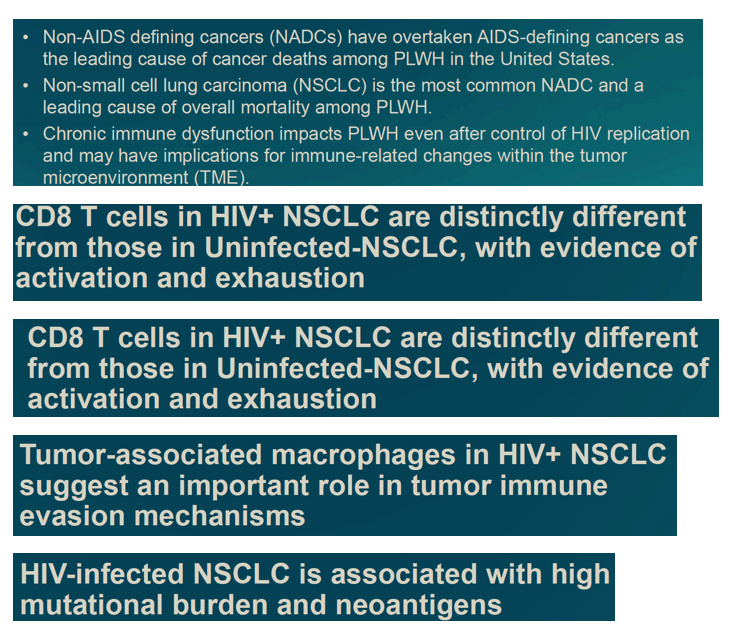
Background:
Non-small cell lung carcinoma (NSCLC) is increased in incidence and a leading cause of cancer death among people living with HIV (PLWH). We explored whether HIV-associated immunologic changes results in an immunoregulatory tumor microenvironment (TME) with limited tumor-specific responses among PLWH.
Methods:
A tissue microarray was constructed with tumors from 18 HIV+ and 19 HIV- NSCLC patients (matched for histology, stage, year of diagnosis, age, sex and smoking status), and incubated with metal-conjugated antibodies for evaluation by imaging mass cytometry (IMC). IMC marker scores were extracted by automated cell segmentation and single-cell data was analyzed by Phenograph. In addition, whole exome sequencing was performed on tumor tissue.
Results:
HIV+ and HIV- tumors demonstrated differential distribution of tumor-infiltrating CD8+ T cell clusters defined by marker expression patterns. Two clusters were significantly elevated in HIV+ tumors (20.3% and 19.9% vs. 9.2% and 4.7% in HIV- tumors, p<0.0001 for both).
The first cluster exhibited an activated effector memory phenotype (CD45RO+CD25+). The second cluster resembled a previously described effector burned-out "Ebo" CD8+ T cell subset with co-expression of immune checkpoint and proliferation markers (PD-1+LAG-3+Ki67+). Within tumor-infiltrating CD4+ T cells, a cluster characterized by checkpoint protein expression (PD-1+ and LAG-3) was also highly represented in HIV+ cases (35.2% vs. 9.8% in HIV- cases, p<0.0001). Finally, HIV+ tumor-associated macrophages (TAM) had higher expression of immunoregulatory molecules (PD-L1, PD-L2, B7-H3, B7-H4, IDO1 and VISTA), confirmed by the expansion of three clusters comprising 58.8% of TAMs vs. 17.8% in HIV- tumors (p<0.0001). Discrimination of cells between HIV+ and HIV- TME was further confirmed by spectral graph theory. Furthermore, tumor mutational burden and neoantigen calling was higher among HIV+ tumors suggesting more antigenic tumors among PLWH.
Conclusion:
Our study suggests that the TME of HIV+ patients is characterized by a unique immune landscape, distinct from that of HIV- patients, with evidence of expansion of immune cells with enhanced immunoregulatory phenotypes and associated with impaired anti-tumor responses. These differences may be due to long-standing viral replication and destruction of lymphoid architecture. Further studies are necessary to elucidate the impact of these findings on prognosis and response to treatment, particularly checkpoint inhibitor-based approaches.
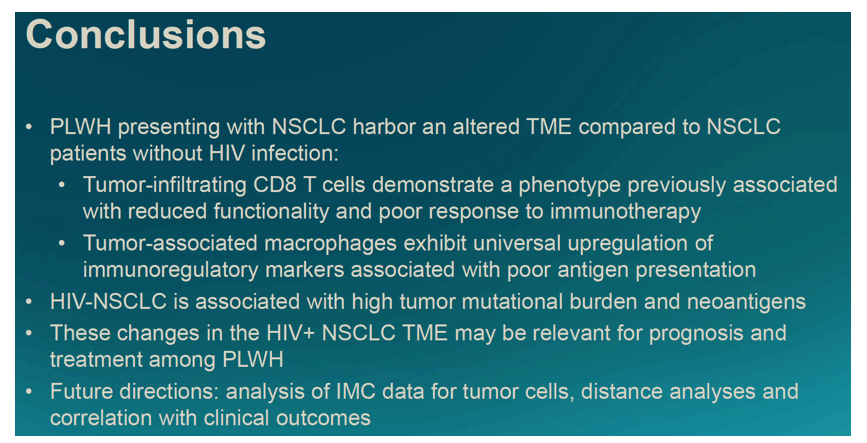
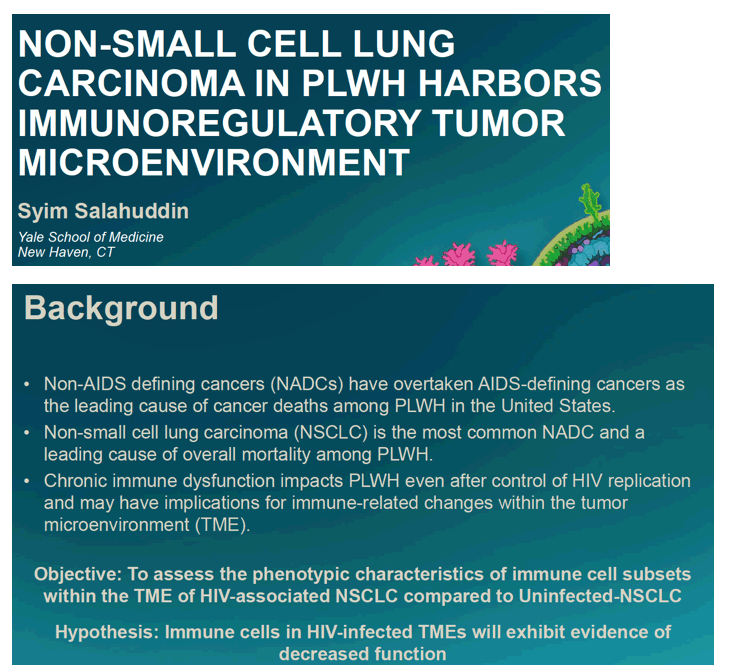
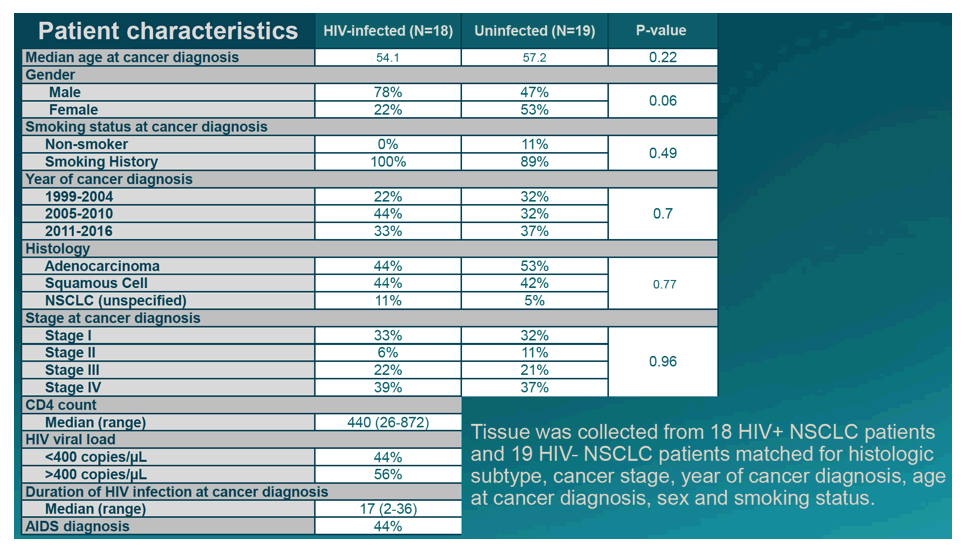
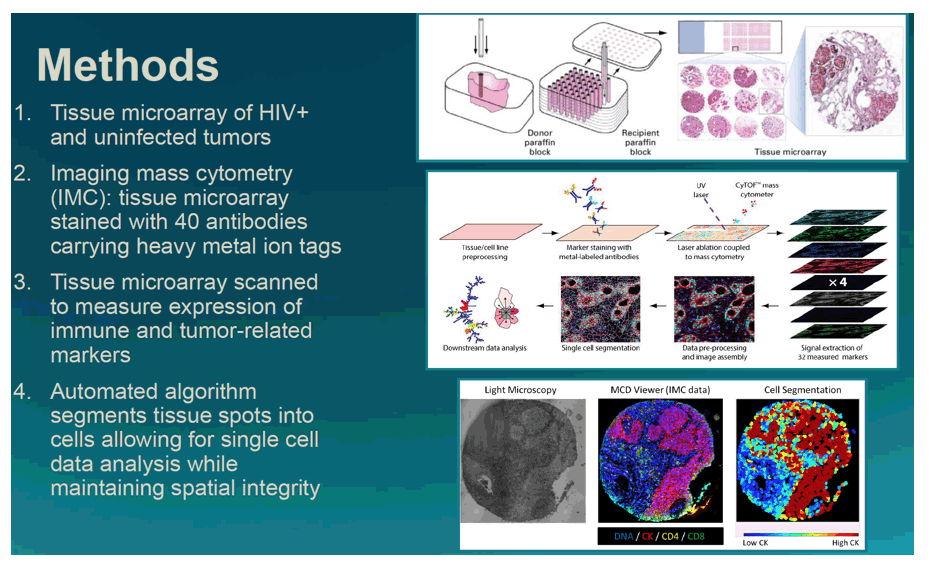
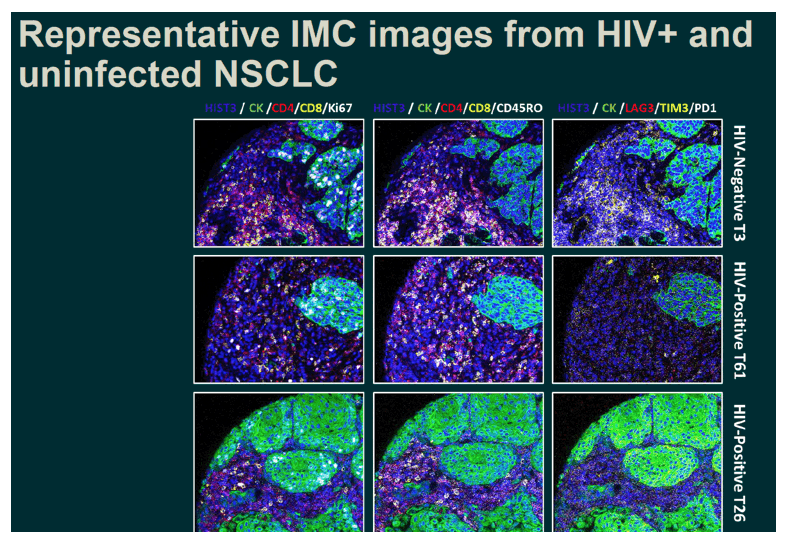
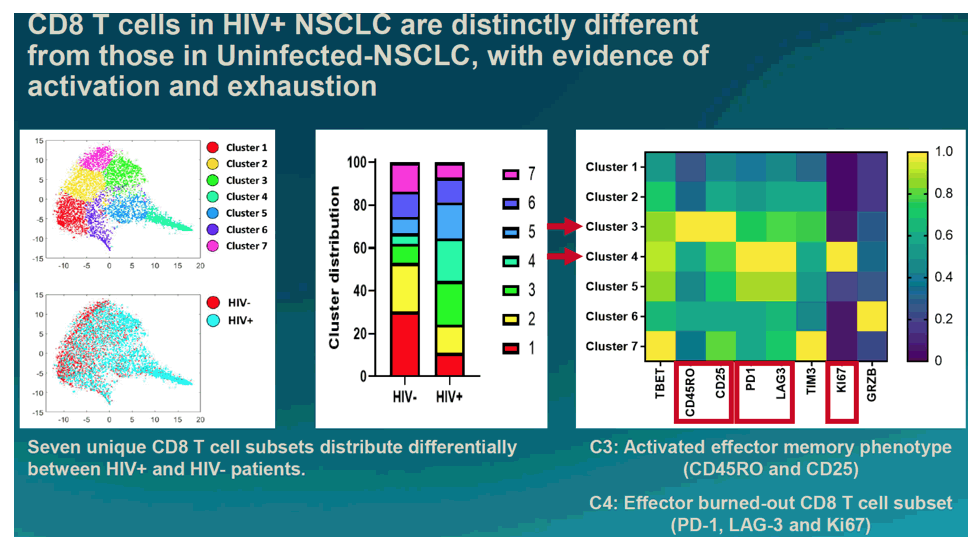
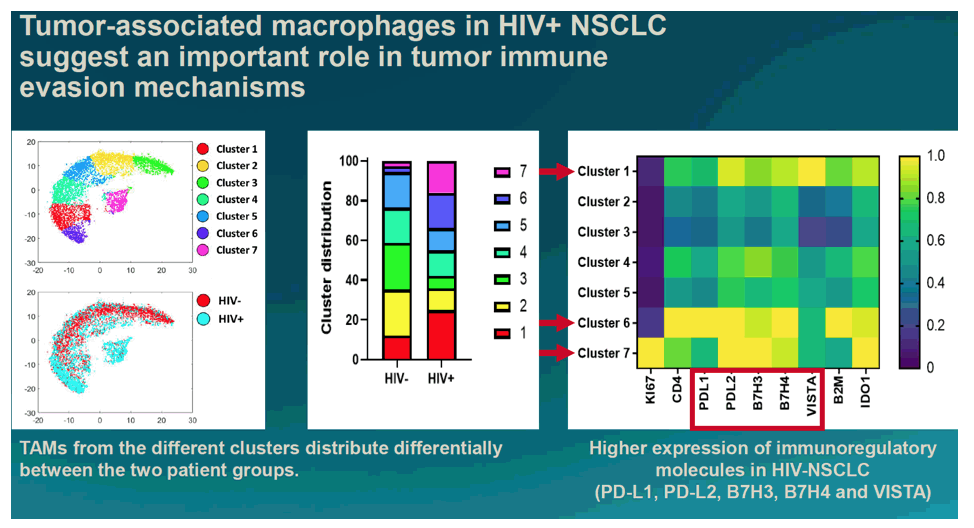
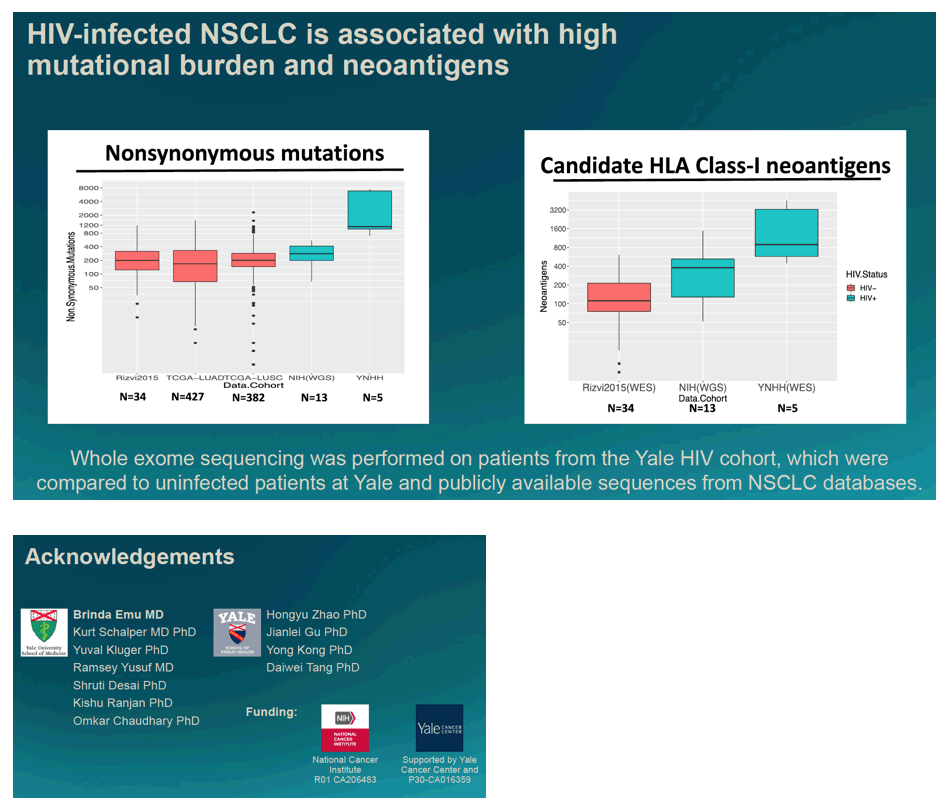
|
| |
|
 |
 |
|
|